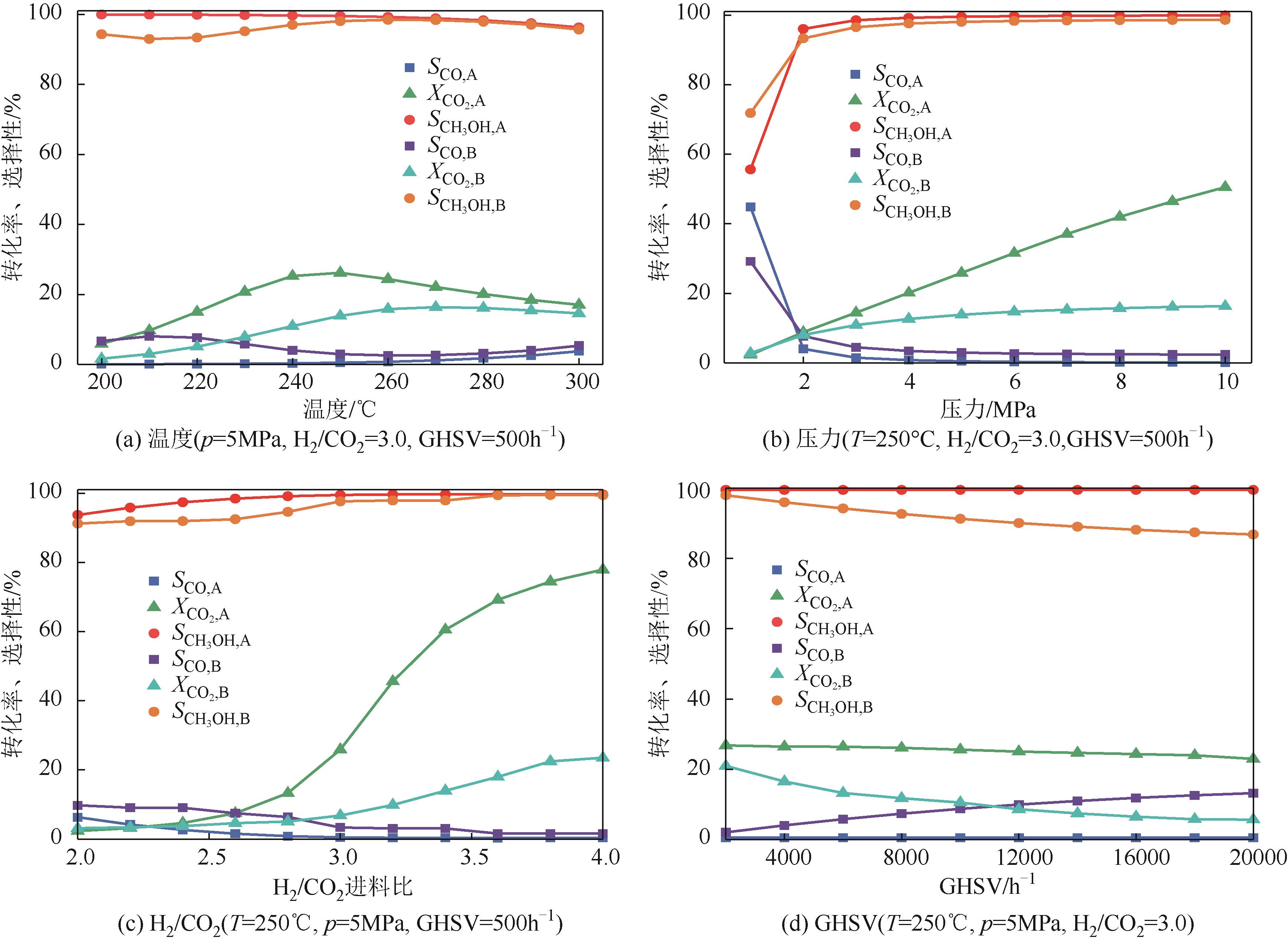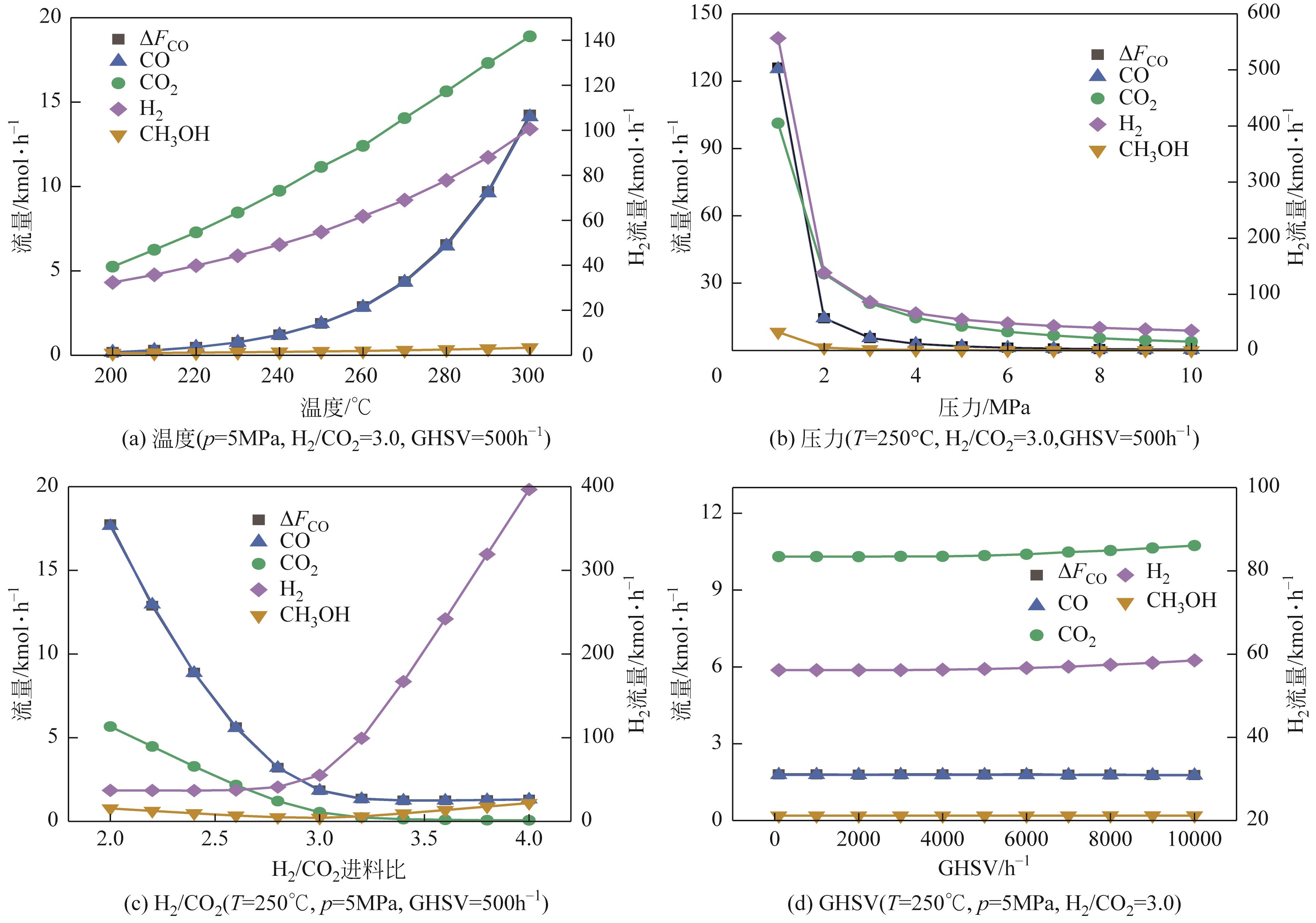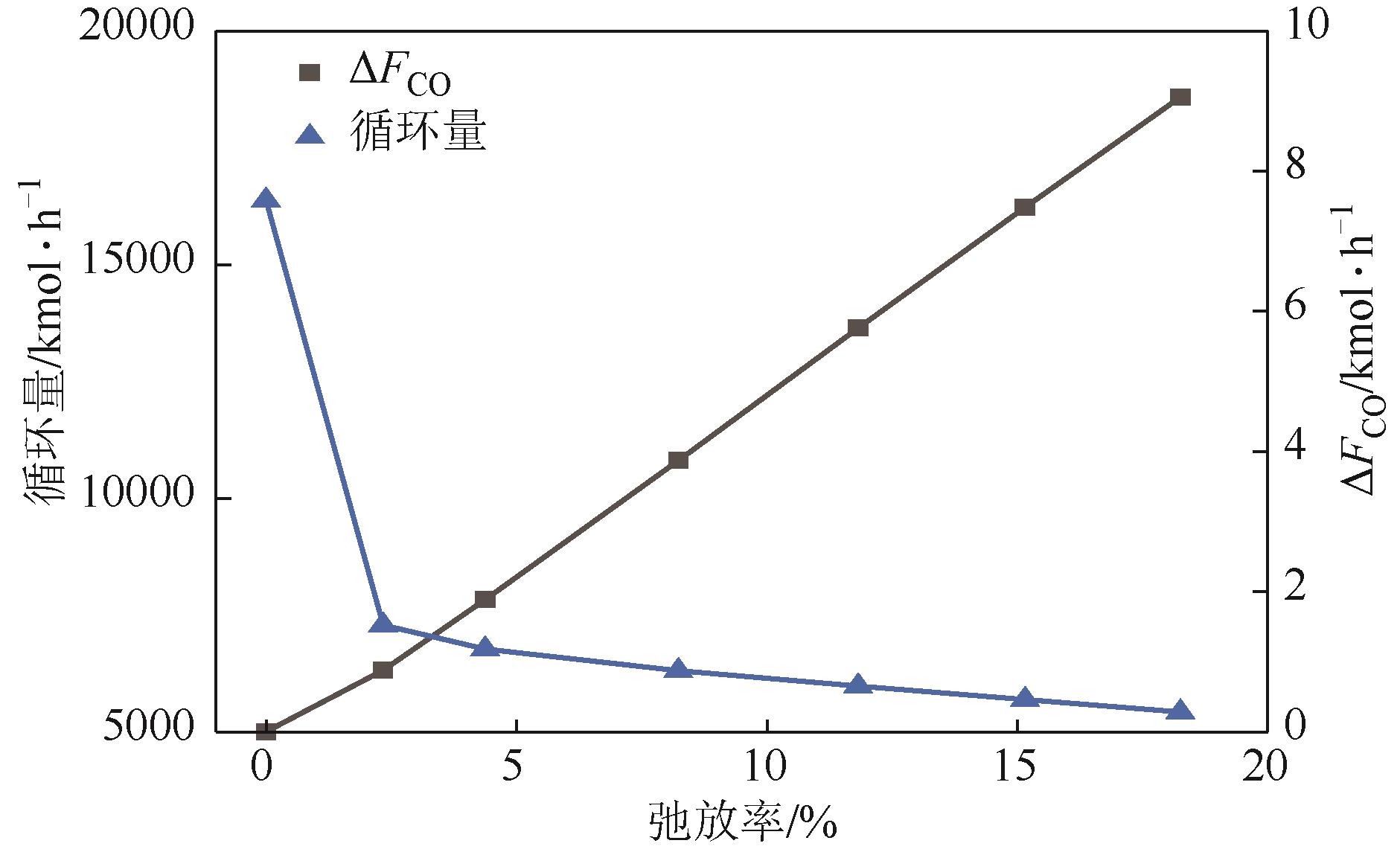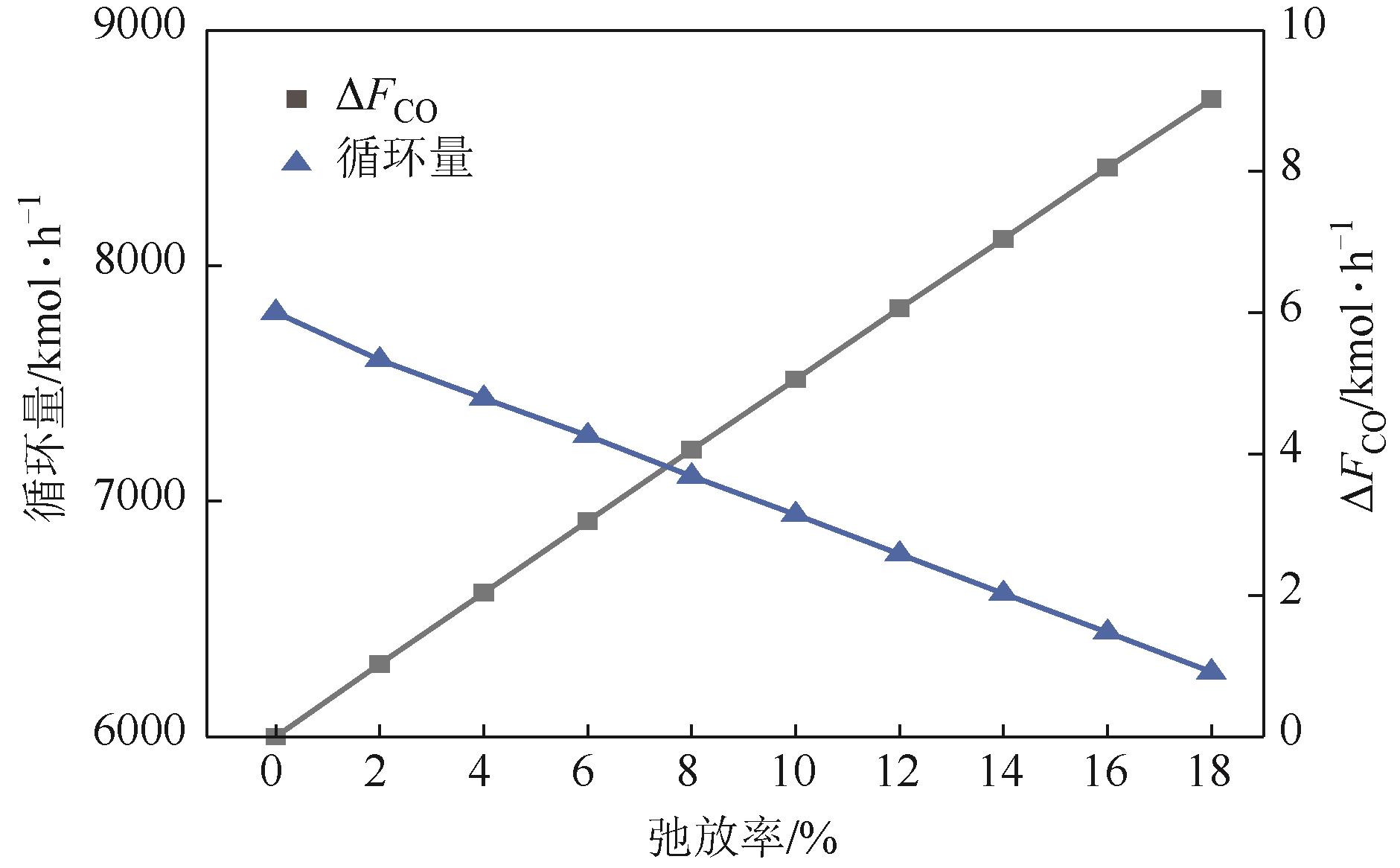| 1 |
SHIH Choon Fong, ZHANG Tao, LI Jinghai, et al. Powering the future with liquid sunshine[J]. Joule, 2018, 2(10): 1925-1949.
|
| 2 |
Oh-Shim JOO, JUNG Kwang-Deog, MOON Il, et al. Carbon dioxide hydrogenation to form methanol via a reverse-water-gas-shift reaction (the CAMERE process)[J]. Industrial & Engineering Chemistry Research, 1999, 38(5): 1808-1812.
|
| 3 |
SAEIDI Samrand, AMIN Nor Aishah Saidina, RAHIMPOUR Mohammad Reza. Hydrogenation of CO2 to value-added products — A review and potential future developments[J]. Journal of CO2 Utilization, 2014, 5: 66-81.
|
| 4 |
GALLUCCI Fausto, PATURZO Luca, BASILE Angelo. An experimental study of CO2 hydrogenation into methanol involving a zeolite membrane reactor[J]. Chemical Engineering and Processing: Process Intensification, 2004, 43(8): 1029-1036.
|
| 5 |
CHEN Guangwen, YUAN Quan. Methanol synthesis from CO2 using a silicone rubber/ceramic composite membrane reactor[J]. Separation and Purification Technology, 2004, 34(1/2/3): 227-237.
|
| 6 |
GU Yu, WANG Danfeng, CHEN Qianqian, et al. Techno-economic analysis of green methanol plant with optimal design of renewable hydrogen production: A case study in China[J]. International Journal of Hydrogen Energy, 2022, 47(8): 5085-5100.
|
| 7 |
YANG Qingchun, ZHANG Zhi, FAN Yingjie, et al. Advanced exergy analysis and optimization of a CO2 to methanol process based on rigorous modeling and simulation[J]. Fuel, 2022, 325: 124944.
|
| 8 |
ANICIC B, TROP P, GORICANEC D. Comparison between two methods of methanol production from carbon dioxide[J]. Energy, 2014, 77: 279-289.
|
| 9 |
WANG Dongliang, LI Jingwei, MENG Wenliang, et al. A near-zero carbon emission methanol production through CO2 hydrogenation integrated with renewable hydrogen: Process analysis, modification and evaluation[J]. Journal of Cleaner Production, 2023, 412: 137388.
|
| 10 |
AN Xin, ZUO Yizan, ZHANG Qiang, et al. Methanol synthesis from CO2 hydrogenation with a Cu/Zn/Al/Zr fibrous catalyst[J]. Chinese Journal of Chemical Engineering, 2009, 17(1): 88-94.
|
| 11 |
LI Hangjie, WANG Liang, GAO Xinhua, et al. Cu/ZnO/Al2O3 catalyst modulated by zirconia with enhanced performance in CO2 hydrogenation to methanol[J]. Industrial & Engineering Chemistry Research, 2022, 61(29): 10446-10454.
|
| 12 |
Hye-Won LIM, PARK Myung-June, KANG Suk-Hwan, et al. Modeling of the kinetics for methanol synthesis using Cu/ZnO/Al2O3/ZrO2 catalyst: Influence of carbon dioxide during hydrogenation[J]. Industrial & Engineering Chemistry Research, 2009, 48(23): 10448-10455.
|
| 13 |
VANDEN Bussche K M, FROMENT G F. A steady-state kinetic model for methanol synthesis and the water gas shift reaction on a commercial Cu/ZnO/Al2O3 catalyst[J]. Journal of Catalysis, 1996, 161(1): 1-10.
|
| 14 |
MIGNARD D, SAHIBZADA M, DUTHIE J M, et al. Methanol synthesis from flue-gas CO2 and renewable electricity: A feasibility study[J]. International Journal of Hydrogen Energy, 2003, 28(4): 455-464.
|
| 15 |
KISS Anton A, PRAGT J J, VOS H J, et al. Novel efficient process for methanol synthesis by CO2 hydrogenation[J]. Chemical Engineering Journal, 2016, 284: 260-269.
|
| 16 |
VAN-DAL Éverton Simões, BOUALLOU Chakib. Design and simulation of a methanol production plant from CO2 hydrogenation[J]. Journal of Cleaner Production, 2013, 57: 38-45.
|
| 17 |
王东亮, 孟文亮, 杨勇, 等. 热泵耦合甲醇多效精馏节能新工艺[J]. 化工进展, 2020, 39(9): 3550-3555.
|
|
WANG Dongliang, MENG Wenliang, YANG Yong, et al. A novel methanol distillation process combining heat pump and multi-effect process[J]. Chemical Industry and Engineering Progress, 2020, 39(9): 3550-3555.
|
| 18 |
WANG Dongliang, LI Jingwei, MENG Wenliang, et al. Integrated process for producing glycolic acid from carbon dioxide capture coupling green hydrogen[J]. Processes, 2022, 10(8): 1610.
|
 ), 李婧玮1, 孟文亮1, 杨勇1,2, 周怀荣1,2, 范宗良1,2
), 李婧玮1, 孟文亮1, 杨勇1,2, 周怀荣1,2, 范宗良1,2
 ), LI Jingwei1, MENG Wenliang1, YANG Yong1,2, ZHOU Huairong1,2, FAN Zongliang1,2
), LI Jingwei1, MENG Wenliang1, YANG Yong1,2, ZHOU Huairong1,2, FAN Zongliang1,2







